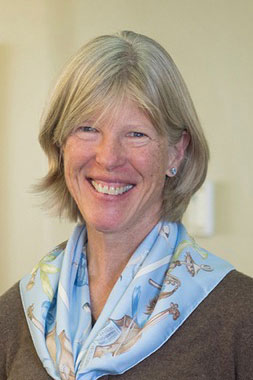UGA alumna Cynthia Kenyon started her research with a basic question: If you change one gene, could you live longer?
The vice president of aging research for Calico LLC and former president of the Genetics Society of America spoke on “Aging and the Immortal Germline” Nov. 7 during the Charter Lecture, part of the fall 2016 Signature Lecture series sponsored by the Office of the Senior Vice President for Academic Affairs and Provost.
“Everything ages, and it’s all around us. We see it when we’re growing up with our grandparents and eventually in ourselves,” said Kenyon, who graduated from UGA in 1976 with bachelor’s degrees in chemistry and biochemistry. “It’s something we take for granted that is just going to happen, and that’s just the way it is.”
Kenyon said one reason people accept that idea is because it’s a gradual decline. But for her, the curious part is that the decline happens at different rates in different species. Different lifespans happen because of different genes, which led Kenyon to her question.
“That by itself tells you that there might very well be genes for aging,” she said. “There could be lots of them or there could be a few of them, but there’s got to be something, so we started asking what that might be.”
Kenyon and fellow researchers looked at C. elegans—roundworms—to test their theories. Specifically, they looked to identify a program for aging.
“We had a very simple idea. Maybe there’s some kind of dial in these species that would be the same in other species that could be turned like a thermostat—up high in an animal that ages fast and down lower in an animal that ages slower,” she said.
They altered genes in various combinations in C. elegans and produced one that lived twice as long. To look at how nature counteracts aging, they also studied germlines, the cellular lineage from which eggs and sperm are derived and in which a cell undergoing mutation can be passed to the next generation. Their findings indicate that these immortal cells have the ability to repair damage prior to fertilization. A protein factor made by the sperm helps clear any aggregated proteins in the egg by getting rid of a suppressor protein that stops RNAs from being used to create other proteins. One of those proteins lowers the pH in the egg’s lysosome so that it functions properly, correcting damage before the egg becomes an embryo.
“Aging is the biggest risk factor for many diseases,” she said. “What’s really interesting is that these mutations that extend life also postpone a lot of these diseases related to aging. So maybe, if you make the change correctly, you’ll postpone age-related diseases as well and stay healthier longer, which is the real goal of people working on aging.”








